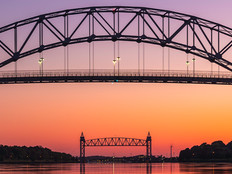Site Simplicity
When the city of Las Vegas redesigned its Web site in 2005, the metropolis gambled on a long shot: to forgo the glitz typically associated with Nevada’s mega betting center in favor of a simple, easily navigable site created to serve its 560,000 residents, thousands of business clients and millions of visitors.
Unlike a number of other city sites, www.lasvegasnevada.gov stays away from mentioning the names of government departments or their acronyms. Instead, the site features an “I Want To” section for users who are looking to perform an array of tasks, such as apply for a job or license, pay a sewer or property tax bill, or schedule an inspection.
“We made it as simple and straightforward as we possibly could,” says CIO Joseph Marcella. “We didn’t want to do the typical government Web site. We wanted to look at this differently, and we didn’t want this to be ‘government as usual.’”
PURPOSE PREVAILS
At first, the information technology department faced a lot of resistance from the city’s various divisions. “I thought management was going to fire me when I started this site,” Marcella recalls. “People said, ‘This is Vegas! Where is the color?’ Our comeback was always, ‘What is the site’s purpose?’”
That purpose, of course, is to help people who live or work in Las Vegas, as well as those who are visiting the city or plan to travel there.
“They are coming to our site for services,” Marcella says. “We found out citizens didn’t look at us as departments. They just looked at us as a city. This is a 24 x 7 town. We need to provide these services on a 24 x 7 basis.”
Having garnered a grudging approval from the necessary 14 city departments and city management, Marcella and Louis Carr, IT manager for client relations for Las Vegas, turned to the business world for someone to design and oversee the new site.
Eventually, the IT department hired Greg Duncan, who was formerly with BP Amoco (now BP), as the newly minted enterprise project manager for its e-government initiative. Duncan spent much of mid-2004 in “absorbing mode,” he says, spending time at the information desk, listening to the questions that visitors and citizens asked agents. He also brought in outside experts on usability and looked at successful commercial sites.
“People did not come and say, ‘Where’s the Public Works Department?’” Duncan points out. “They’d come with a piece of paper and say, ‘Where do I go for this?’
“We’re trying to push scenario-based design. And that’s how we came up with the ‘I Want To’ section of the site.”
HITTING THE JACKPOT
The Las Vegas Web site, which gets about 200,000 hits a month, “was relatively inexpensive,” according to Marcella.
Typically, a city of this size would spend between $1.5 million and $2.5 million to design and implement its Web site, but Las Vegas spent only $143,000 for its site. And because of the site’s usability, Marcella adds, the city saves dramatically on customer support costs.
According to a report by the market research firm Frost & Sullivan, on average, it costs an organization $33 to have a customer service agent respond to a query by phone, $8 to respond via e-mail and 25 cents through the Web site, Duncan says.
Today, users can perform many activities through the site, including viewing live images from traffic cameras positioned around the city or filing complaints about traffic lights, potholes or animal control. If they run into trouble, the site features a live interactive support button that enables users to direct questions to city employees.
In order to promote the site, the city made sure its URL pops up as one of the first or second links during a Google search, Marcella says. In addition, the department holds occasional citizen workshops to demonstrate the site. Looking ahead, Las Vegas is researching the possibility of strategically placing information kiosks around the city, allowing access to the site, says Marcella.
“Citizens love [the Web site],” he notes. “It isn’t 100 percent. There are still areas in need of improvement, but we’ll do the best we can for the majority of folks.”
PRE-1998
The first iteration of the Las Vegas Web site placed heavy odds on government-speak and little on usability. Users faced a daunting index of city government agencies and services.
1998
The revamped Web site assumed most users were visitors, not residents. The site displayed agencies, not functions, but it featured links to actual tasks.
2002
The Web site included hot technologies, such as streaming video and snazzy graphics, but most users couldn’t access these features with their dial-up modems. The site also offered information in Spanish.
2005
The archaic language is gone, along with the menu of agency names. Users can find information by clicking on easily navigable “I Want To” buttons that are featured on the revamped Web site.






